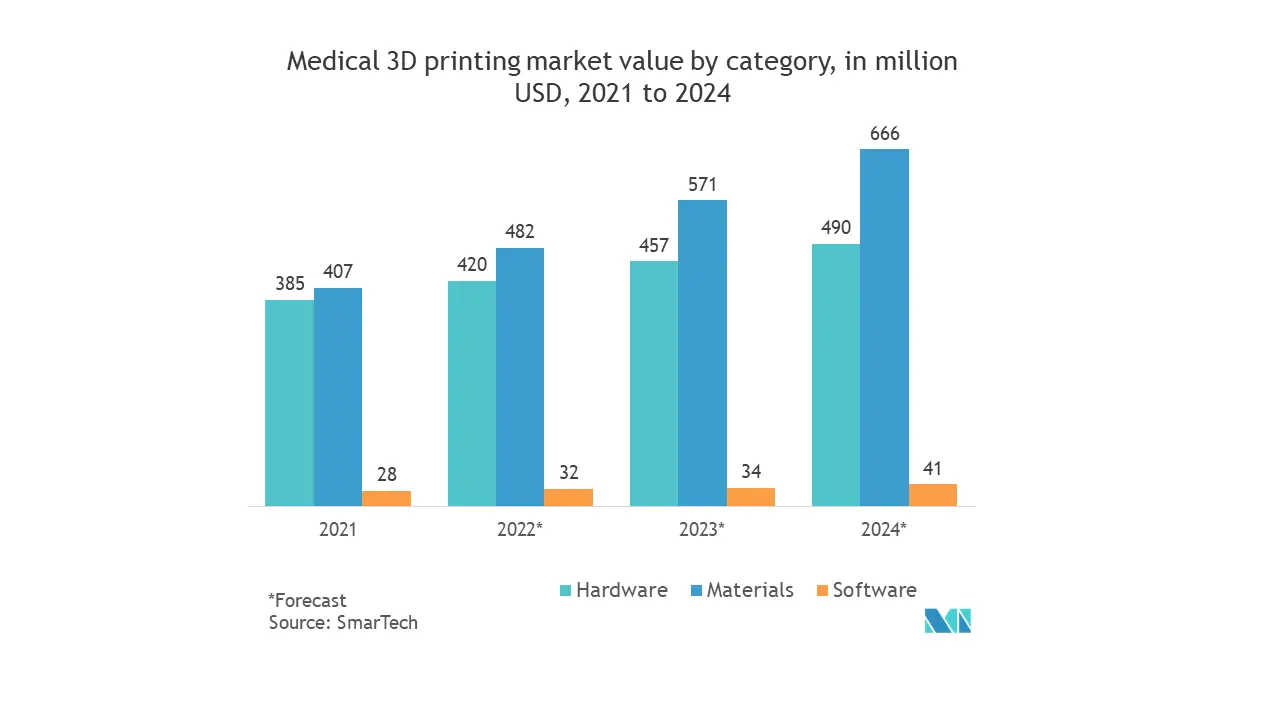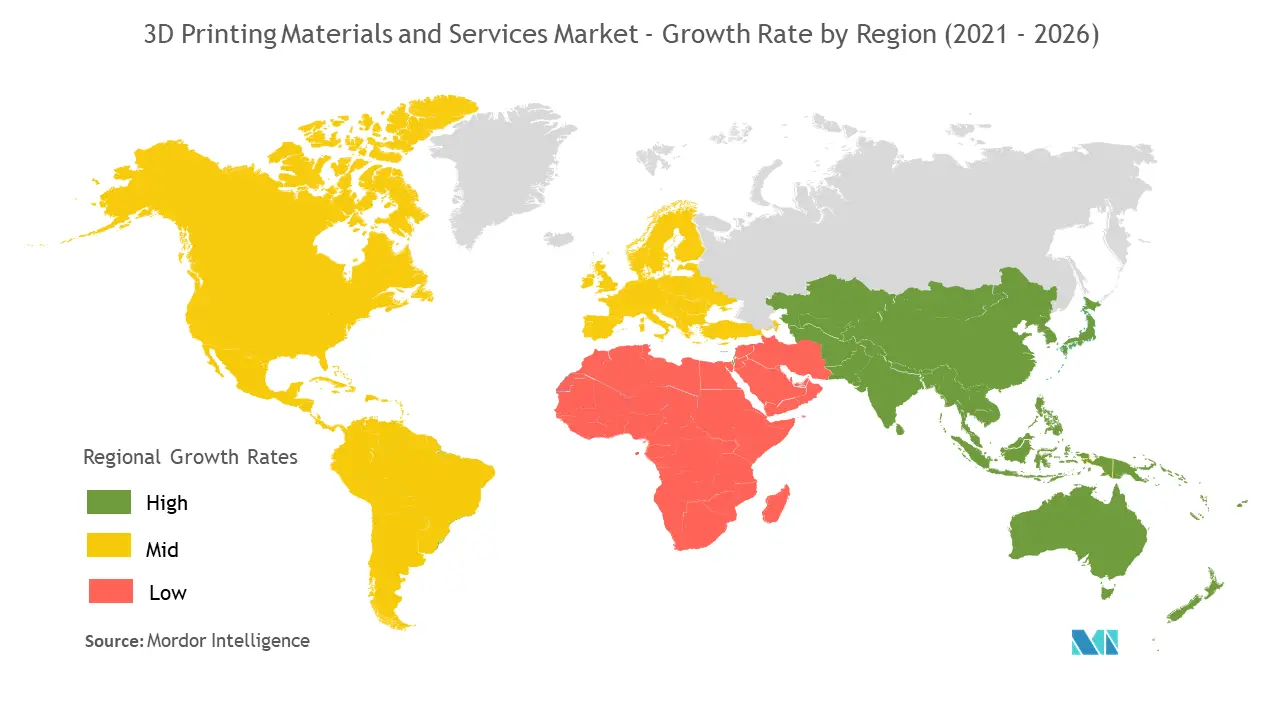Market Trends of 3D Printing Materials and Services Industry
This section covers the major market trends shaping the 3D Printing Materials & Services Market according to our research experts:
Increasing Applications in the Automotive Industry
- 3D printing materials are extensively used in the automotive industry to manufacture scaled models for testing. They are also used for components, such as bellows, front bumper, air conditioning ducting, suspension wishbone, dashboard interface, alternator mounting bracket, battery cover, etc. Automotive OEM manufacturers are using 3D printing materials for rapid prototyping.
- Owing to the advantages of the 3D printing process, such as low cost, less manufacturing time, reduced material wastage, etc., automotive manufacturers are moving toward the usage of this process. Some of the largest automotive manufacturers in the world, such as AUDI, Rolls Royce, Porsche, Hackrod, and many others, are using these materials for manufacturing spare parts and metal prototypes.
- The current slowdown in global automotive production has affected the market for polyester staple fiber because of the decreased demand for automotive fibers. Additionally, the current slowdown in automotive sales in countries such as China is further expected to hinder the demand for 3D printing materials.
- The pandemic has severely impacted the automotive sector globally; according to OICA (International Organization of Motor Vehicle Manufacturers), global production of vehicles in the third quarter of 2020 was around 50 million, a significant decrease compared to the production in the third quarter of 2019, which was around 65 million.

China is Expected to Dominate the Market
- China is among the fastest-growing markets in terms of new technologies and the usage of innovative materials for construction purposes. With China's dominating role as a global construction center, the accelerated development in the 3D concrete printing sector is likely to revolutionize the traditional construction industry in the country, with applications ranging from residential buildings to monuments.
- The country is involved in the construction of buildings, offices, and bridges using 3D printing technology. Additionally, Shanghai is the home for the longest 3D-printed bridge, which is 86 feet in length in the world, consisting of 176 concrete units.
- There are a few limitations for 3D printing in the construction sector, such as lack of confidence from building developers and absence of proper regulations for the usage of this technology. However, with the increasing awareness regarding new technologies and their advantages, organizations and individuals are increasingly tending toward cost-saving alternatives. This, in turn, is driving the demand in the 3D concrete printing market in the country.
- China has the world's largest automotive market in terms of production. Although the production in the country declined in the past few years, the electric vehicles segment is expected to grow. In April 2020, the Ministry of Finance of the People's Republic of China issued a notice on ways to promote financial subsidies for new electric vehicles. It stated that new EVs purchased between January 1, 2021, and December 31, 2022 would be exempted from vehicle purchase tax.
- Furthermore, the layer-by-layer deposition process in 3D printing allows sensors, antennas, and other functional electronics to be printed directly onto plastic components, metal surfaces, and even glass panels and ceramic materials.


